BURLINGTON, ON May 15, 2013. John Mello is the kind of guy who stands around a lot. He is usually thinking five or six steps ahead of the people he is involved with. He’s a railroad guy – didn’t actually work on a railroad – he just likes trains. Not the model railway trains guys build in the basements and then wear a funny hat and walk around with an oil can in their hands. Mello talks about BIG trains, preferably steam engines.
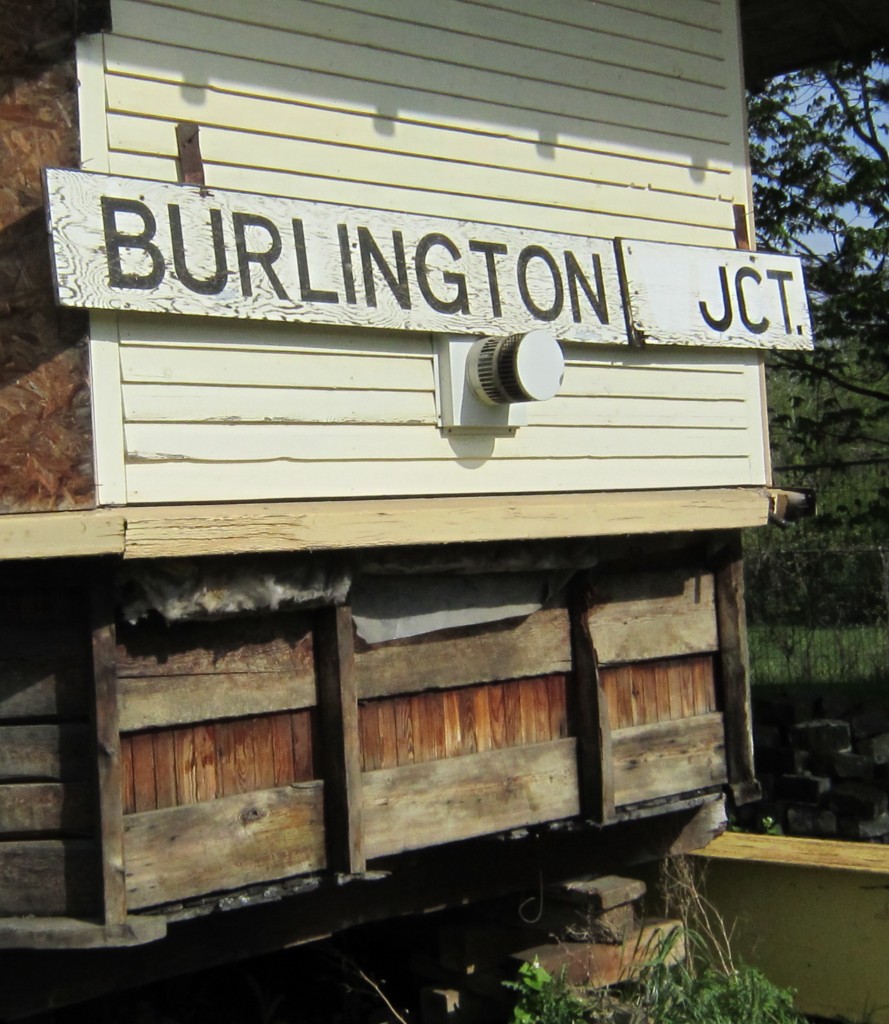
Sitting on some “cribbing” with a sign badly in need of several coats of paint, the Freeman Station gets ready for its big move.
That ability to talk about big trains comes from his 44 years of experience in the railway business where he started as a “train order operator”. Long before cell phones – back in the days when it was a telegraph operator sending messages in Morse code engineers would be given their instructions written out on small pieces of paper called flimsies that were attached to a hoop and passed up to the engineer as the train slowed down. Mello goes back “that far” – lots of history in the man.
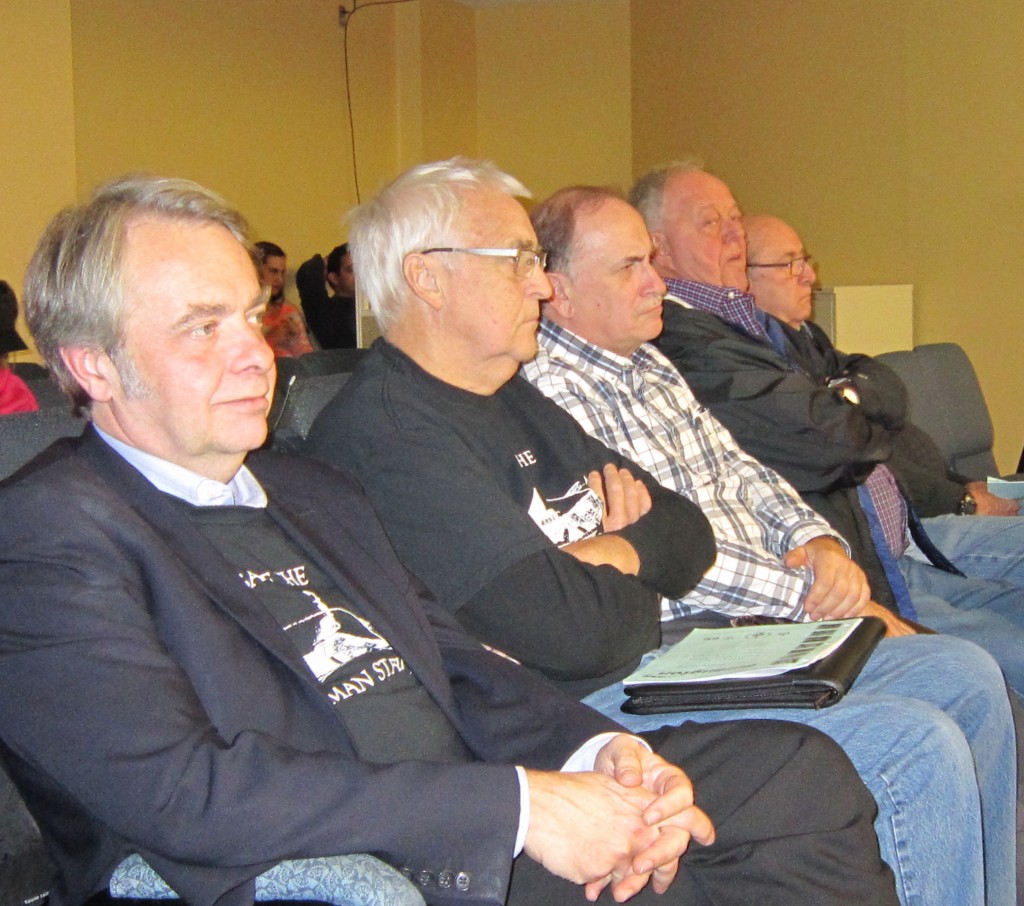
The Freeman Five – with John Mellow in the center listening to city council make a decision. This isn’t a group Council was going to say no to easily.
Mello is one of the group that is refurbishing the Freeman Station. It has been a long haul, a very long haul and they are nowhere near where they want to be but there are glimmers of hope and small, even if faltering steps, taken that move the ball up the field.
While there are pounds of paper, documents, permits and who knows what else, Mello leaves all that messy stuff – and it is messy, to others. He has his eye on the bigger picture.
The next step is to get the station off the really shaky set of blocks it is sitting on and onto sturdy steel beams so that it can be at least moved to its new site – which is less than 100 yards away.
The structure sits on what they call “cribbing” – been there since 2005 and Mello says” it’s still pretty solid”. Mello explains with the ease of a truck driver who can move one of those eighteen wheelers through downtown traffic just how it is all going to happen.
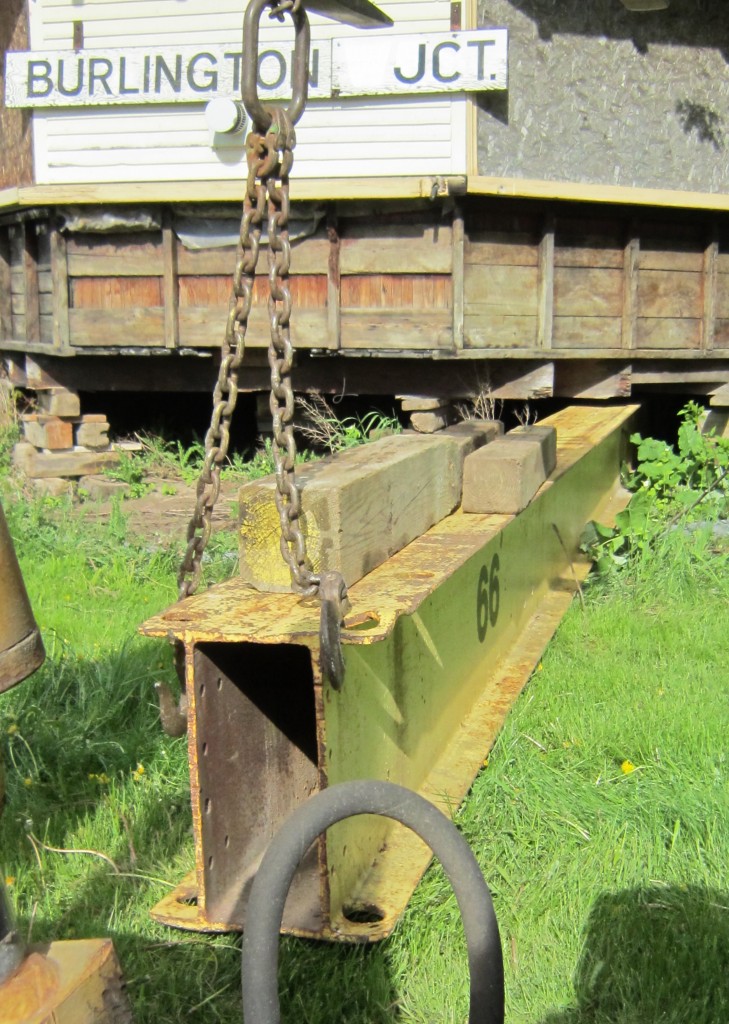
This beam, one of four that will be used, is being shoved under the station. Once it is in place it will be jacked up and take the weight of the station – 100 tons. Then dolly wheels will be attached to the beams and it will be slowly moved from where it has sat since 2005 and to its new home – 100 yards away. There it will be refurbished and restored and then it will be ready for transfer where it truly belongs – on Lakeshore Road next to the old railway line. In the fullness of time all that will happen.
The steel beams are being slid underneath the building where they are levelled and shifted to make sure they are right underneath beams in the building that can carry the weight of the building. Then the beams are jacked up high enough for the person overseeing the restoration of the building can get underneath and do some of the work that has to be done before the building is actually moved.
When everything is ready for the actual move a couple of sets of “dolly’s” – wheels that are together are attached to the beams and the building gets rolled forward and through the fire station parking lot on Fairview and then back into its resting place on the Ashland property where the serious restoration work will begin.
“They’re going to drive forward from over there” said Mello pointing to the station and then “pull the truck right up to the curb here and slowly back it in and then lower it to the ground” explains Mello.
And he knows exactly where that here is going to be. “The end of the station will be here” he says as he point to a spot in an open field with hydro towers and a patch of sumac trees that will have to come out. The trees are very young – easily replaced with something more substantial. The other end of the station will be close to that tree over there” he adds.
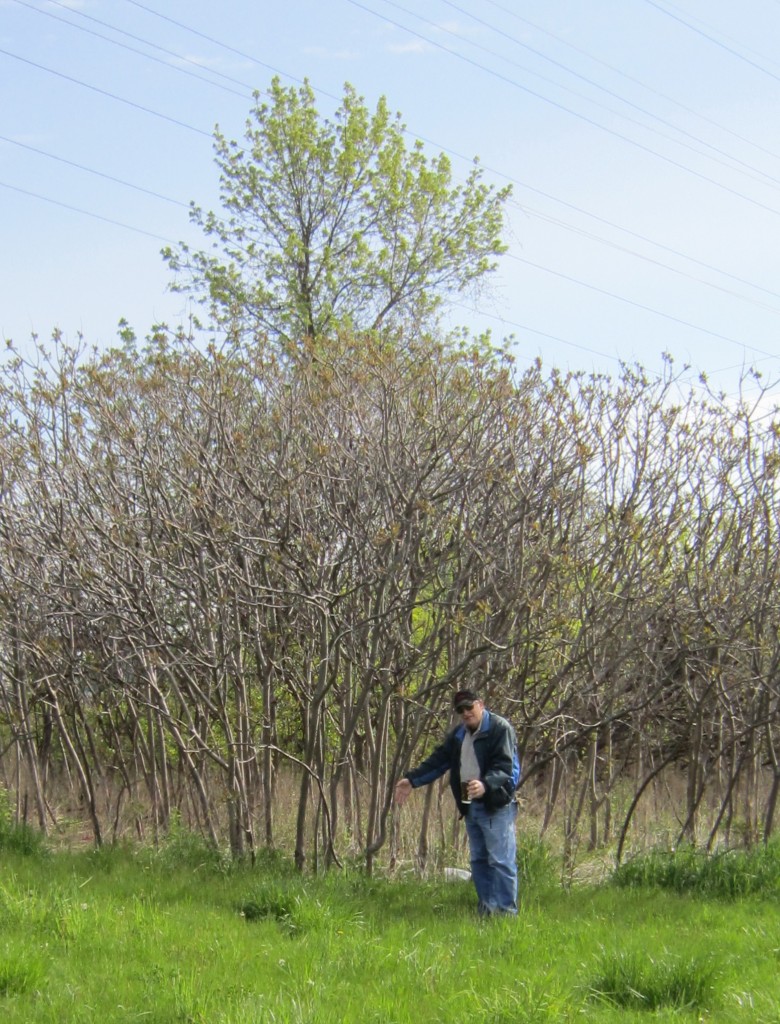
John Mello points out where one end of the Freeman Station will rest. The other end will be at about where the tall tree is in the background. Sod turning will take place May 23rd.
“A roadway will come in through here and curve around to the front of the building where there will be parking for a couple of cars”, adds Mello.
When will all this happen? In the fullness of time is the best Mello can say – he’s not the type to be rushed.
He does hope that the public turns out to watch the actual move. The structure weighs 100 tons – “they made them good in those days” explains Mello. “They had wood we don’t have today.
Mello is looking over the horizon at the bigger picture. The lot of land the Friends of Freeman have is quite large – there will be quite a bit of landscaping to be done and that too will be done in the fullness of time. Maybe there is some railway track and a couple of engines in the station’s future? Maybe an original steam engine and a diesel as well. Mello worked for GO transit for a number of years and he’s the kind of guy who makes friends he can call on.
Fundraising, an ongoing task for the Friends, is currently focused on selling the equivalent of railway ties that will hold imaginary track. One railway tie moves the station six inches. They’ve sold a couple of hundred of the things so far. For $20 you can move the station six inches.
Sod turning on the site is to take place May 23rd, in the forenoon. All the people who managed to put up or secure funds for the moving and refurbishing the station will be out along with the politicians. It’s not much more than a photo-op – all part of the process when you work with city hall.

It was Councillors Blair Lancaster, on the right and Marianne Meed Ward that kept the Freeman station idea alive while citizens like Freeman Station president James Smith, second from left and John Mellow in the middle, pulled together a citizens group that will restore and refurbish the structure.
That Thursday will be a very full day for the friends of Freeman Station – in the afternoon they gather to celebrate the life of Jane Irwin, one of the biggest advocates for saving the station. The sod turning ceremony, a real high for the people who got the station to this point, which is a long way from the day the city ran an advertisement asking if anyone wanted to take the thing off our hands. There were no takers.
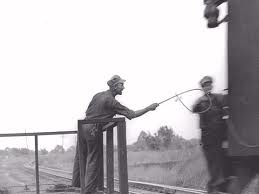
Train order operators used hoops like this to pass messages to trains as they passed slowly through a station. John Mello was one of the people who wrote out the instructions on what were then called “flimsies”. “We used carbon paper in those days – does anyone even know what that stuff is today” wonders Mello.
Councillors Marianne Meed Ward and Blair Lancaster were the two members of council who were not prepared to let the station fade from the pages of the city’s history. They kept the issue before council while citizens formed a group and got themselves organized.
When the day is done on the 23rd people will return to their homes with fond memories of Jane Irwin and the knowledge that turning the sod for new Freeman station home was a good thing to get done.
John Mello will slip down to the basement of his Burlington home and look through his railway memorabilia collection and let his mind slip back to when he reached up to engineers with that hoop holding the instructions telling them where they were to go and what they would face in terms of oncoming rail traffic. That’s the way they did it in those days.



















